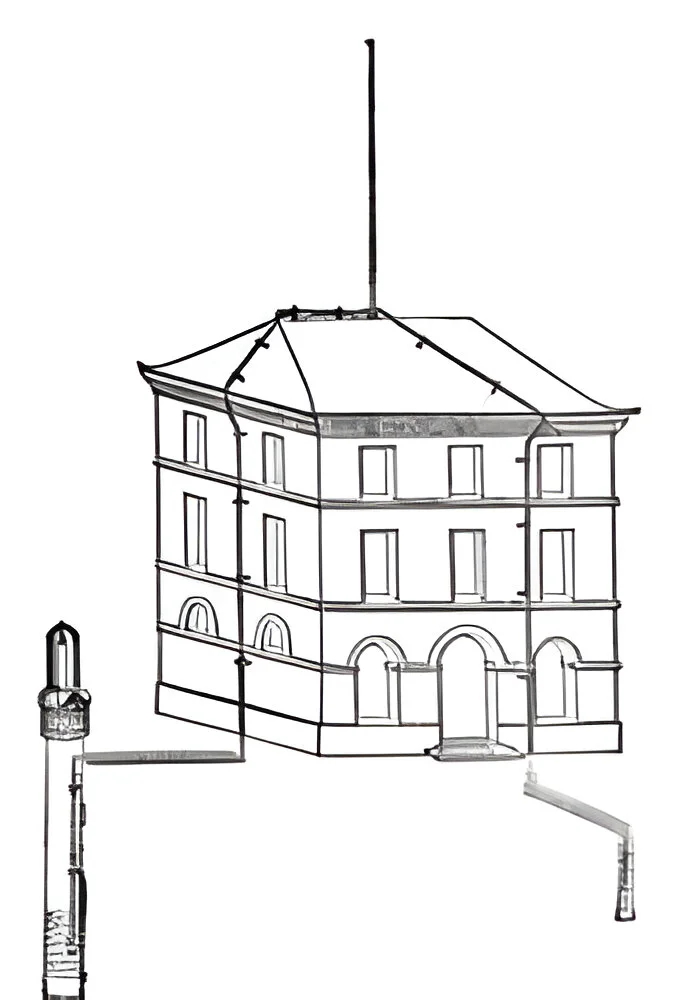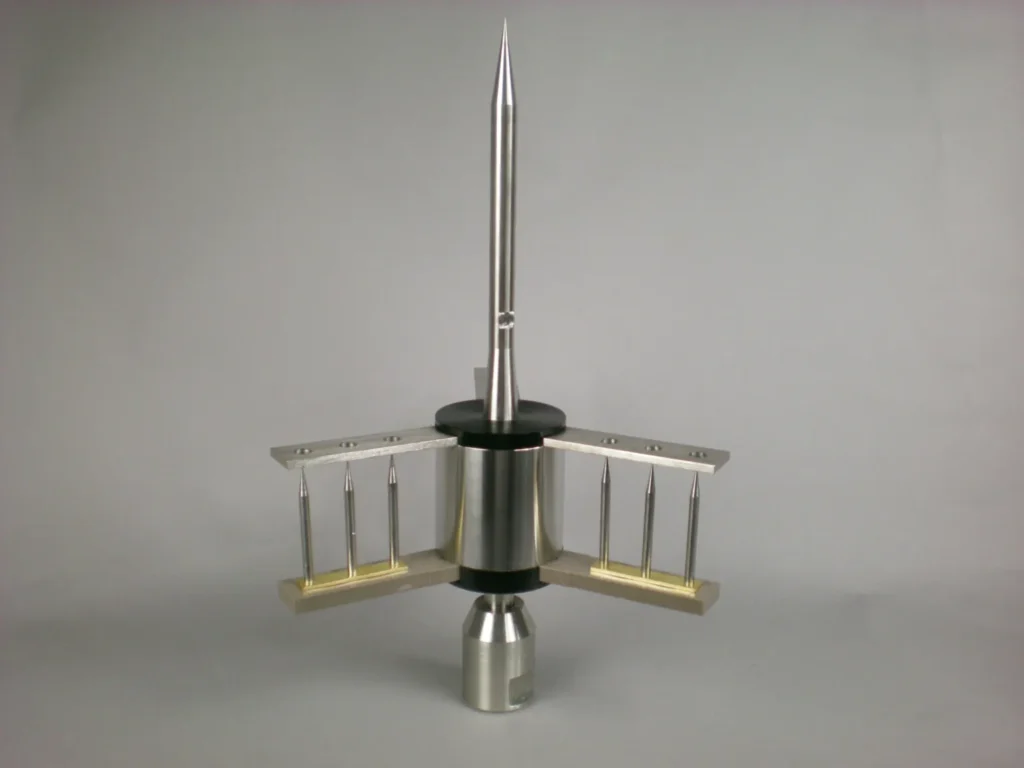The old-fashioned lightning rod, also known as the Franklin lightning rod, was invented by American scientist Benjamin Franklin in 1752. It is a metal pole installed on a building. One end of the pole points sharply upward and the other end is connected to the grounding system. It is used to protect the building and the equipment inside from being damaged by lightning. In the lightning protection system, the lightning rod is one of the components, and it also needs the cooperation of the grounding system to exert the final protection function.
Old-fashioned lightning rods are made of conductive materials such as copper or aluminum, and are available in a variety of shapes, including pointed, round or flat heads.

Working Principle
The working principle of the old lightning rod is to use the tip discharge principle. In other words, the tip discharge principle gave birth to the old lightning rod.
Tip discharge: refers to the fact that on the same charged conductor, the charge density at the tip is greater than the smooth part, the electric field intensity near the tip is also stronger than the smooth part, and the tip is more likely to discharge into the surrounding air or the adjacent ground body.
Therefore, the edges and corners of the device relative to the surface and the human fingers relative to the palm can be regarded as tip parts.
The lightning rod and lead line provide a path of least resistance for lightning. When charged clouds approach a building, the heterogeneous charges in the earth are attracted to the tip of the lightning rod, discharge due to the tip, and eventually released into the air, neutralizing the charges in the clouds. To achieve the purpose of “lightning protection”. But sometimes the electric charge density in the thundercloud is too high, and lightning will still occur in the area covered by the lightning rod. At this time, the tip of the lightning rod will attract lightning and introduce it into the earth, thus having the effect of “drawing lightning”.
Why are there glass balls on old lightning rods?
These glass balls are used decoratively and can also be used in weather vanes. However, the main purpose of these glass balls is to provide evidence that the lightning rod has been struck by falling or breaking. If you find that the glass beads have been damaged or lost after a lightning storm, you need to promptly check whether the building’s grounding system is damaged.
Pros and Cons
Advantages of installing a lightning rod: The main advantage of using a lightning rod is that it protects the house from damage caused by lightning strikes. Allowing users to use electrical equipment with peace of mind during thunderstorms.
Disadvantages of installing lightning rods: The initial installation cost of lightning rods is relatively high, especially if the roof lines are complex or the building is tall, the material cost and labor cost will increase. Lightning rods also require regular maintenance, which also incurs costs in time and money.

Comparison of old lightning rods and modern lightning rods
The air terminals of old lightning arresters are usually pointed metal rods, while the air terminals of modern lightning arresters have several other styles, such as round metal balls and cage-type lightning protection nets. Modern lightning rods use multiple strands of twisted copper wire, which is stronger and more stable than the metal wires used in older lightning rods.
How to install lightning rod on the roof?
The lightning rod is installed at the highest point of the roof, and it needs to be several meters higher than the highest point, and then connected to the ground with a down lead, and the resistance is required to be no more than 10Ω. Most buildings require at least three lightning protection down conductors. If a single pair of equipment is lightning protected, one is enough.
